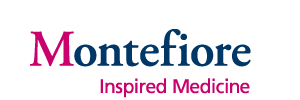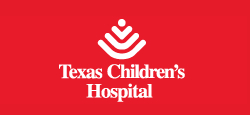Three Times Weekly (TIW) Growth Hormone Therapy in Children on Hemodialysis
| Status: | Not yet recruiting |
|---|---|
| Conditions: | Renal Impairment / Chronic Kidney Disease |
| Therapuetic Areas: | Nephrology / Urology |
| Healthy: | No |
| Age Range: | Any - 16 |
| Updated: | 11/30/-0001 |
| Contact: | Marcia K Dyas, BSN |
| Email: | marcia.dyas@nationwidechildrens.org |
| Phone: | 614-722-4399 |
TIW Growth Hormone Therapy in Children on Hemodialysis
Hypotheses:
1. The provision of thrice weekly subcutaneous (SQ) recombinant growth hormone (rGH)
therapy to children receiving in-center hemodialysis (HD) will result in improved
growth.
2. The provision of thrice weekly SQ rGH therapy to children receiving in-center HD will
result in improved lean body mass, nutritional status and quality of life.
TIW rGH treatment regimen (0.35 mg/kg/week divided into 3 doses, each dose being given at
the conclusion of the dialysis treatment) for up to 2 years; growth response, Dual energy
X-ray absorptiometry (DEXA), and quality of life (QOL) will be measured. The goal is to
enroll 20 children who are Tanner 1 with decreased height SDS and/or decreased height
velocity standard deviation scoreS (SDS).
If this therapy is demonstrated to be efficacious and improves growth and QOL, this therapy
could be easily implemented for all eligible children on HD, since parental acceptance
should be better without having to administer the rGH at home and compliance for the child
will be assured.
The investigators thus propose an important study that has the ability to advance their
understanding and provide evidence for the best methods to promote growth in children on
dialysis. The results of this study will result in important information that will be of
value to the entire pediatric nephrologist community, including health care professionals,
patients, and families. In a real sense, this study will build on the 2006 Consensus
Conference guidelines for evaluation and treatment of growth failure in children with
chronic kidney disease (CKD). This will provide evidence for critical management decisions
that can help insure better growth opportunities to more children with CKD.
Objectives/Aims:
1. To demonstrate the beneficial effects of thrice weekly SQ rGH Rx on growth in children
on HD
2. To demonstrate the beneficial effects of thrice weekly SQ rGH Rx in terms of improved
lean body mass, nutritional status and quality of life in children on HD
Study Design:
1. Study group - Provision of standard weekly dose of SQ rGH (0.35 mg/kg/week divided into
3 doses, each dose being given at the conclusion of dialysis therapy) for up to 2 years
to growth retarded (Height SDS < -1.88 or Height velocity < -1.88 SD) children
receiving HD who are naïve to rGH or who have not been on rGH for at least 12 months.
Inclusion criteria are: medically cleared for SQ rGH Rx (14); growth potential based on
Tanner stage 1 with open epiphyses on Bone Age radiographs (Bone age < 12 years);
expected to require HD for at least 6 more months; at least 6 months of standardized
historical pre-study anthropometric data (including stadiometer height). Exclusion
criteria include all medical factors that indicate that rGH therapy should not be used
(14), e.g., poor nutritional status, poorly controlled acidosis, poor dialysis adequacy
(defined by Kt/V < 1.2), poorly controlled renal osteodystrophy (PTH > 800). Once the
complicating factor is addressed and corrected, the child may be considered for the
study.
2. SQ rGH to be provided in-center at the conclusion of dialysis session three times
weekly for up to 24 months. SQ rGH dose to be adjusted based on dry (euvolemic)
weight every month during the intervention.
3. Baseline and monitoring data obtained on each patient on SQ rGH Rx. This will include
stadiometer measured height for at least 6 months prior to initiation of SQ rGH Rx to
provide important baseline height and growth velocity to be used to determine magnitude
of the response.
4. For children with suboptimal response after 6 months of standard SQ rGH Rx dose
(annualized growth rate < 2 cm more than the preceding year), the rGH dose will be
increased to 0.70 mg/kg/week divided into 3 doses (similar to the reported "pubertal"
dosing regimen used in some GH deficient children).
Baseline data: Height (stadiometer), Weight, BMI, Height SDS, Height velocity SDS
(historical past 6 months), Weight SDS, BMI SDS, Hb, BUN, nPCR, serum albumin, serum
calcium, serum phosphorus, iPTH, electrolytes, high sensitivity CRP (as a marker of
inflammation), dialysis adequacy (defined by single and double pool Kt/V - Kt/V is a
unitless number used to quantify hemodialysis and peritoneal dialysis treatment adequacy: K
- dialyzer clearance of urea, t - dialysis time, V - patient's total body water; in HD the
target is 1.2), IGF-1, IGFBP-3, hip films and bone age (4,5,6,9). In addition, lean body
mass/and fat mass will be assessed by DEXA (to standardize the determination of LBM, DEXA to
be done mid week, after the dialysis treatment, to avoid the excess fluid commonly present
after 2 days off dialysis each weekend) and quality of life will be assessed by the PedsQL
4.0 Generic Core Scales (10). The nutritional parameters that will be determined (wt/ht, ht
SDS, BMI, nPCR and serum albumin) represent the currently used assessments of nutrition for
these patients and have been validated as best measures of nutrition in children on dialysis
(12).
Assessments to be repeated at the following intervals:
1. Height (stadiometer), Weight, Hgb, BUN, nPCR, serum albumin, serum calcium, phosphorus,
and electrolytes, Kt/V - monthly
2. CRP, iPTH, IGF-1, IGFBP-3 - every 3 months
3. PedsQL - every 6 months
4. DEXA and Bone Age - yearly (and within 1 week of renal transplant if this occurs
anytime 6 months after start of study) - DEXA and Bone Age results will be sent to
Nationwide Children's and analyzed by our collaborating pediatric radiologist (Larry
Binkovitz, MD).
Inclusion Criteria:
- Chronic Renal Failure on Hemodialysis
- Tanner 1
- Bone Age <12
- Below the 3rd %tile for height or have growth velocity < 3rd %tile and are not
on SQ rGH Rx
- At baseline, study population will also have to have documentation of normal thyroid
status, secondary hyperparathyroidism will be controlled in acceptable range (iPTH <
800), adequate dialysis (Kt/V >1.2) and normal acid-base status.
- expected to be on hemodialysis at least 6 months
Exclusion Criteria:
- Anyone not meeting the inclusion criteria.
We found this trial at
5
sites
Montefiore Medical Center As the academic medical center and University Hospital for Albert Einstein College...
Click here to add this to my saved trials
Children's Mercy Hospital Children's Mercy Hospitals and Clinics continues redefining pediatric medicine throughout the Midwest...
Click here to add this to my saved trials
Children's Healthcare of Atlanta Whether treating a toddler in an emergency or supporting a teen...
Click here to add this to my saved trials
Texas Children's Hospital Texas Children's Hospital, located in Houston, Texas, is a not-for-profit organization whose...
Click here to add this to my saved trials
Click here to add this to my saved trials



